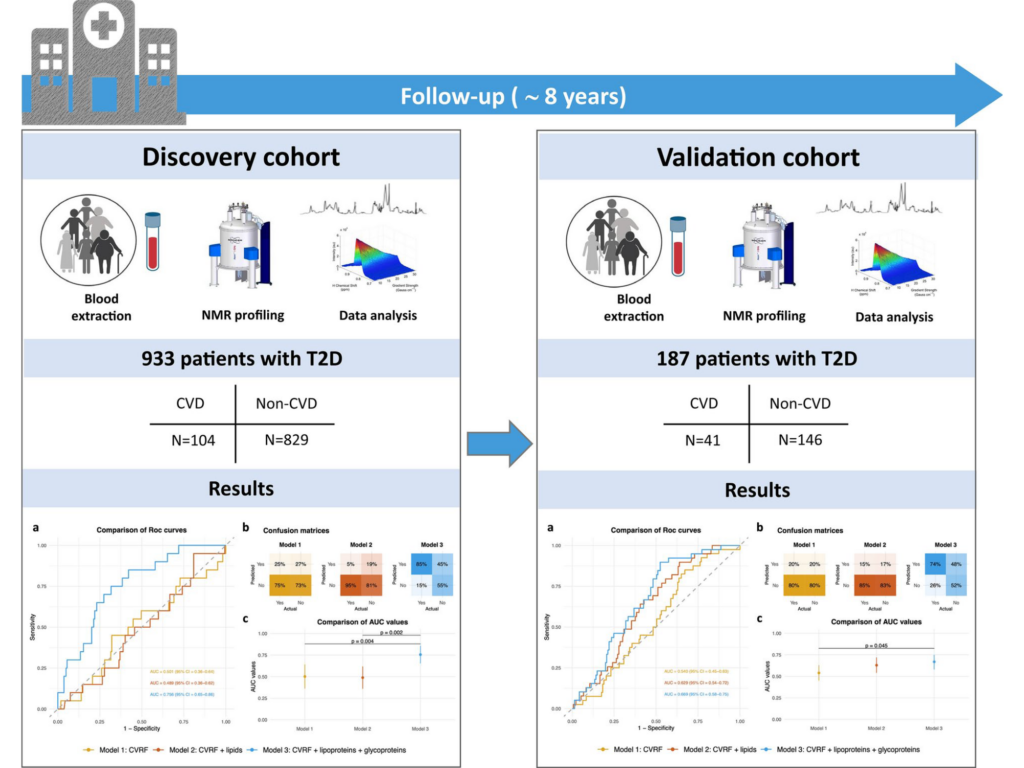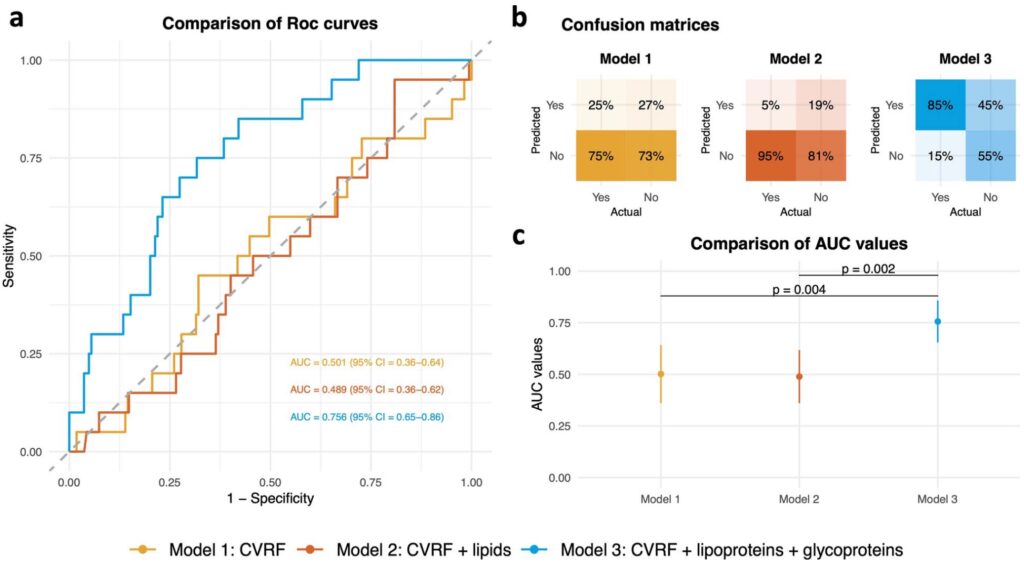Residual cardiovascular risk remains one of the main barriers to the effective prevention of cardiovascular events (CVE) in patients with type 2 diabetes. Prediction models based on traditional markers such as LDL cholesterol, blood pressure, or HbA1c have limited ability to identify those patients at highest risk.
Recently, a new study published in Cardiovascular Diabetology, the result of a multidisciplinary collaboration between experts from various institutions —including Núria Amigó, Esmeralda Castelblanco, Josep Julve, Neus Martínez-Micaelo, Núria Alonso, Marta Hernández, Josep Ribalta, Montse Guardiola, Pere Torán-Monserrat, Victor Lopez-Lifante, Cecilia Herrero-Alonso, Ingrid Arteaga, Emilio Ortega, Josep Franch-Nadal, and Didac Mauricio— presents promising results using advanced nuclear magnetic resonance (NMR) technologies: Liposcale®, for detailed lipoprotein profiling, and Glycoscale, for the analysis of inflammatory glycoproteins
The study, a prospective and multicenter investigation, is part of the LIPOCAT project and was designed to evaluate the clinical utility of nuclear magnetic resonance (NMR)-based tests for predicting cardiovascular events in patients with type 2 diabetes. Data from 933 adult patients, with a mean age of 65 years, were analyzed over several years within the primary care setting of the Catalan public health system.
During this period, major cardiovascular events (such as myocardial infarction, stroke, or revascularization) were documented as the primary outcome variable. Classical clinical data (age, sex, BMI, smoking status, HbA1c, etc.) were collected and integrated with lipoprotein and glycoprotein profiles obtained through the Liposcale® and Glycoscale® platforms. The study hypothesized that incorporating these advanced markers would significantly enhance the predictive capacity of traditional models.

The results highlight the added value of advanced biomarkers in evaluating cardiovascular risk in patients with type 2 diabetes. In the initial analysis, the model based solely on conventional clinical variables showed limited predictive power, with an AUROC of 0.501, indicating virtually no discrimination between patients who experienced events and those who did not.
However, incorporating variables derived from advanced lipoprotein and glycoprotein profiling provided by Liposcale® and Glycoscale significantly improved predictive power, reaching an AUROC of 0.756. This increase represents a substantial enhancement in the ability to identify patients at higher risk of cardiovascular events.
Key contributors to the improved model included remnant cholesterol (VLDL-C + IDL-C), triglycerides in LDL particles, and the inflammatory glycoproteins GlycA and GlycB, all of which are well-documented in the literature as emerging cardiometabolic risk markers.
The model was successfully validated in an independent external cohort of 253 patients, further supporting the robustness of the findings and the potential clinical applicability of these biomarkers.

The findings of this study support the value of advanced NMR-based lipoprotein and glycoprotein profiling as a complementary tool to traditional clinical models for predicting cardiovascular risk in people with type 2 diabetes. The significant improvement in discriminatory capacity suggests that these biomarkers help identify high-risk metabolic phenotypes not captured by conventional parameters.
In particular, the prognostic relevance of markers such as remnant cholesterol, LDL triglycerides, and GlycA/B signals reinforces the hypothesis that metabolic and inflammatory processes beyond glycemic and LDL cholesterol control play a key role in the development of cardiovascular events.
These results point to a future potential implementation of these technologies in clinical practice, particularly within the context of personalized medicine, where accurate risk stratification and early intervention are essential to improving health outcomes.
📖 Study reference:
Amigó N, Castelblanco E, Julve J, et al. Improved cardiovascular risk prediction in type 2 diabetes using advanced lipoprotein and glycoprotein characterization: a prospective study. Cardiovasc Diabetol. 2025;24:32. doi:10.1186/s12933-025-02636-5